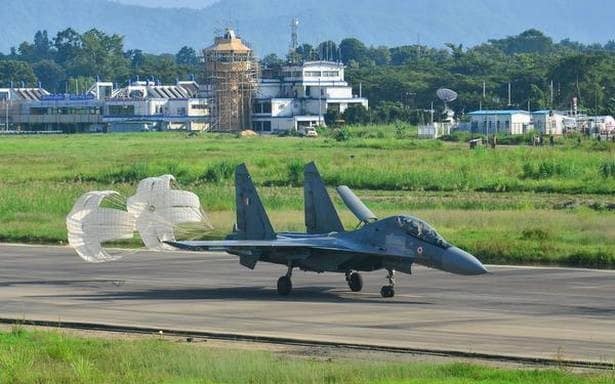The ministry of defence (MoD) has acknowledged the seriousness of the situation in Ladakh, where Indian soldiers are facing off against Chinese intruders, by green lighting the purchase of weapons and equipment worth Rs 39,800 crore.
“In the current situation and the need to strengthen the armed forces for the defence of our borders, and in line with our Prime Minister’s clarion call for ‘Atma Nirbhar Bharat’ (self sufficient India), the Defence Acquisition Council (DAC), in its meeting of July 2 held under the chairmanship of Defence Minister Rajnath Singh accorded approval for capital acquisitions of various platforms and equipment required by the Indian armed forces. Proposals for an approximate cost of Rs 38,900 Cr were approved,” the MoD stated on Thursday.
“Further, addressing the long-felt need of the Indian Air Force (IAF) to increase its fighter squadrons, the DAC also approved the proposal for procurement of 21 MIG-29 fighters, along with upgradation of existing 59 Mig-29 aircrafts and procurement of 12 Sukhoi-30MKI aircraft,” said the MoD.
The ministry said procurement from Russia and upgrade of MiG-29s would cost about Rs 7,418 crore, while Hindustan Aeronautics Ltd (HAL) would build the Sukhoi-30MKI fighters in Nashik for an estimated Rs 10,730 crore.
The MoD stated that, given its “focus on indigenous design and development”, the bulk of the clearances – worth Rs 31,130 crore – have been accorded for indigenously built weaponry.
The indigenous equipment “involves Indian defence industry with participation of several MSMEs (medium, small and micro enterprises) as prime tier vendors. The indigenous content in some of these projects is up to 80 per cent of the project cost,” said the MoD.
Indian companies are building much of this equipment – worth Rs 20,400 crore – based on technology transferred to them by the Defence R&D Organisation (DRDO). These include the Astra air-to-air missile, software defined radio (SDR), munitions for Pinaka multi-barrelled rocket launchers and Land Attack Cruise Missiles (LACMs), said Dr G Satheesh Reddy, the DRDO chairman.
The Astra missile, for which the first order will now be processed, is an indigenous design triumph. It is in the “beyond visual range” (BVR) class of air-to-air missiles, fired from fighter aircraft to destroy fast manoeuvring enemy targets by day or night. It is learnt that 250 Astra missiles are being ordered and the missile is being integrated with the Sukhoi-30MKI.
The MoD said the clearance for the Pinaka MBRL would allow additional Pinaka regiments to be raised, boosting the army’s attack capabilities. Pinaka is all-weather, indirect fire rocket system that delivers a lethal punch from multiple rockets to area targets such as enemy troops in the open, armoured and soft skinned vehicles and fuel and ammunition dumps.
Funding has also been allocated for the development programme of the Nirbhay “long range land attack cruise missile” (LRLACM), that engages targets up to 1,000 kilometres away.
The DRDO says it has “developed, demonstrated and matured critical cruise missile technologies such as aerodynamic configuration, vertical launch using solid booster, thrust vector control system, booster separation, in-flight wing deployment, in-flight engine start and long range way-point navigation system. Seeker development and testing by DRDO laboratories are demonstrated and is at a high level of readiness.”
Now, the DRDO is finalising the development of the LRLACM.
Even after the DAC clears procurement of a piece of equipment, it takes about three years for that approval to fructify into a contract, according to an official estimate by the MoD in 2017. There is a separate proviso for “fast-track” purchases, which also take at least a year.

















